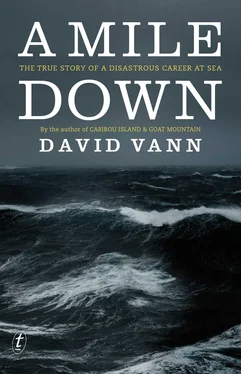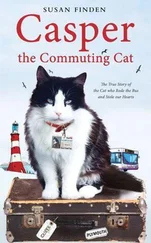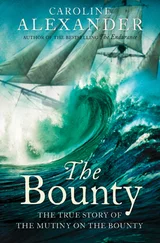“Hold on!” I yelled to Nancy. “We might capsize.”
Our boat yanked suddenly to starboard, tipping over, and I heard a ripping sound of the line coming up through the water then whacking the side of our ninety-foot hull like a piano string. We went fast backward and sideways through the water, I fell down on the deck, grabbed onto the kayak that was tied, and then we went level again, the bow flung around and yanked forward.
“Holy shit,” Nancy said.
I got back up and joined her at the helm. I called the cutter on the radio. “We’re okay, I think,” I said. “And the line’s clear. But that was dangerous and ridiculous. That was the closest I’ve ever come to capsizing.”
No response. So we waited. Then, finally, “Roger that. Line is clear.” Then he asked that we not stop again for chafing. He said he preferred to take the chance of it severing. So I said fine and went to drain the diesel tanks and pump the aft bilge.
After pumping the aft bilge, I used my flashlight to examine the area, as I had several other times, and this time I found a hairline crack, an actual crack in our hull. It was about six inches long, a foot forward of the rudder stock and slightly off centerline to port. I could see water coming up under pressure. I couldn’t help but think of submarine movies after the depth charge hits.
I reported this crack to the cutter helmsman. He said to monitor it and let him know if it worsened. I asked whether I should try caulking it with something, though I didn’t think I had anything that would cure on a wet surface. He said sure, try it.
So I went through our supplies and found 3M 4200, a caulking compound I knew would not cure and would not be up to the job. That was all I had, and it wasn’t worth trying. I hadn’t really counted on cracks in the hull. I had assumed that the integrity of the steel hull, as long as I kept it coated to prevent corrosion, would be the one thing on this boat I could always count on. It was ABS Marine Grade A steel, the best steel you can use for a boat, welded using proper techniques and equipment, and inspected by Bureau Veritas, an international classification society. If you can’t count on that, why bother with any of the rest? All the other work I had done on the boat didn’t really make sense if the hull wasn’t going to stay in one piece.
I tried to reassure Nancy, because she looked worried. I guess being fifty miles from land in thousands of feet of water at night in stormy conditions being yanked through the water at nine knots by a group of incompetents while we had a crack in our hull somehow gave her cause for concern.
“Steel doesn’t really tear,” I said. “Not like how a crack could open up in a cement, wood, or fiberglass hull. The molecules are flexible, you know, like how you can melt a metal into a liquid. I remember this from chemistry. The cell walls in wood are rigid and can crack, but steel shouldn’t do that. So it should be okay to have a crack, and it shouldn’t be able to rip apart any of the rest of the hull.”
This explanation was incoherent, and certainly desperate and inaccurate, but Nancy seemed willing to accept it, at least for now, since there wasn’t much other encouragement I could offer.
By around 4 A.M., we could see the lights of St. Croix, and by daybreak we were being towed into a big bay protected from waves. We anchored, then began a long search by radio for yards that could repair us. We finally found St. Croix Marine, a boatyard on the other side of the island. They agreed to an emergency haulout, so Nancy and I picked up anchor and found that we could steer fine in calm conditions. But then, when we were halfway there, cruising along the northern coast, St. Croix Marine canceled the haul because their railway had rust and they were afraid our hundred-ton boat might break it.
I was feeling desperate, since we were now underway, leaking with a crack in our hull, and had nowhere to go for repairs. Nancy came up from below looking oddly happy with her mop and bucket, getting the boat all cleaned up for our charter, keeping the aft bilge water low, and I hated to tell her the news.
“How can they do that?” she asked. “Don’t they know we have a crack in our hull?”
“I know,” I said. “I’m trying to find other options.”
“Well what are the other options?”
“I don’t have any yet.”
“Oh great,” she said, and went back below to pump the bilge again.
After many more calls on the radio, I found one last option, a salvage diver in the British Virgin Islands who had a good reputation and lots of experience and would have underwater epoxy ready. He had done underwater rudder repair for many boats, including removing a rudder, taking it to the shop, then reinstalling it. So I turned to port, my beam to the waves, and motored away from St. Croix.
The steering was easy, but I tried to baby the rudder as much as possible, not putting any force on it. It was a beautiful day, sunny and bright, only a few scattered squalls, none of them in our path. The seas built to five or six feet, so that we rolled slightly in the troughs, but it wasn’t bad.
After about two hours, Nancy reported that the water from the crack was coming in at an increased rate, so I went below to check. The water was sloshing back and forth, as it had before, since we were rolling a bit. The pump was still faster than the leak, but not by a lot. I reported this on the radio. I was still in touch with the Coast Guard. We were an hour and a half from our rendezvous point.
I returned to the helm. “I’m glad we’re meeting the diver soon,” I told Nancy.
Then we heard a loud metallic sound in the stern and the boat went into a spin. I turned the helm but there was no response. I pulled back on the throttles.
“There’s water in the hallway,” Nancy said from down in the main salon. “There’s too much water for the pump.”
I went below for a quick look. The hallway was flooding, already a few feet deep. I knew from our spinning that we had lost our rudder. And I knew from this water suddenly in the hallway that the rudder had taken a piece of our hull with it.
“Grab our ditch bag,” I told Nancy. “And get our important papers from the desk. We’re abandoning ship.” I went for the radio.
“MAYDAY, MAYDAY, MAYDAY,” I called on channel 16. “This is the sailing vessel Bird of Paradise , the sailing vessel Bird of Paradise . We have lost our rudder and are flooding and sinking fast. We are at 18 degrees 9.2 North, 64 degrees 39.8 West, approximately ten miles south of Norman Island. That’s one eight degrees nine decimal two North, six four degrees three nine decimal eight West, approx. ten miles south of Norman Island. We are two persons on board, two adults, David Vann and Nancy Flores. Vessel is ninety feet, white hull, two wooden masts, wooden pilothouse. This is a MAYDAY, MAYDAY, MAYDAY. We are sinking fast.”
“I have your disk with your writing,” Nancy said, holding my red backup disk. “What else do you want?”
“Did you grab all the papers out of the drawer?”
“Yeah. What else?”
“Put a lifejacket on. And first, can you grab my black folding knife? I need it to cut the dinghy free.”
Virgin Islands Search and Rescue (VISAR) hailed me on the radio. They acknowledged the mayday and asked again for my position. They said they had a twenty-two-foot rescue boat responding. I gave my position again.
“Can you also raise your mainsail?” the controller asked.
“Why?” I asked.
“So the rescue boat can spot you more easily.”
This was not a good idea. Our mainsail was huge and took a long time to put up. And it would make us heel over further and also push us forward through the water, even with the boom out. And the boom would be swinging as we rolled. I couldn’t think of a worse suggestion. I didn’t want to sound rude, though, since they were coming out to rescue us.
Читать дальше












